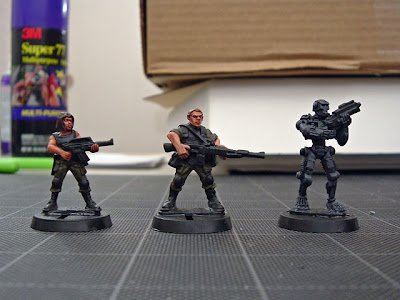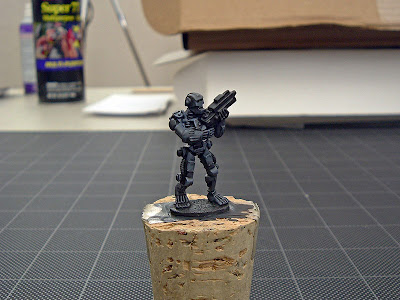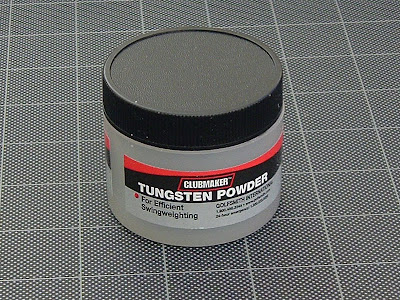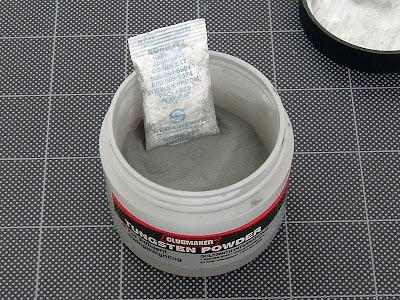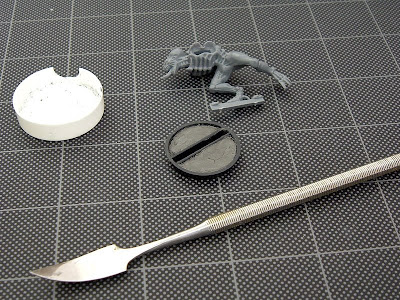My wife and I visited the local gaming store the other day just to pick up some dice I needed for a game. We walked out with a brick of green 12mm 6-sided dice, the new Citadel Wash set, and a Tyranid Carnifex. Heh. So much for just buying the dice.
I took a look inside the box last night, but didn’t have time to really get into it since I still had some work to finish. Today’s a light day for work, so I figured I’d take a poke at building the thing. Here are my impressions:
The size of this thing is unreal. I knew it was big, it looks big on the box, and it looks big in photographs. Seeing it in the flesh is something else…this thing is big. It towers over everything else I have by at least a good inch and a half, and that includes my Space Marine dreadnought and the Tau battlesuits. Here are some photos of the finished model:
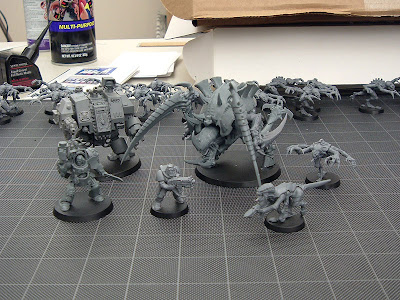
Group shot with my Space Marines and a couple other Tyranids
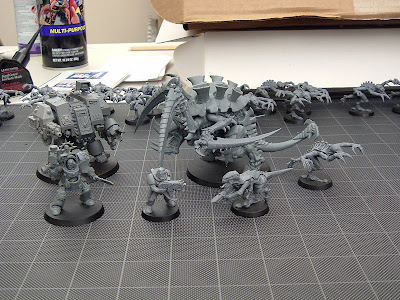
Same setup, Carnifex rotated for a side view
Box Contents
The box contains a glossy black and white instruction booklet, three sprues, and a 60mm base.
The first sprue contains 5 and a half 2-part heads, a pair of Devourer arms, a pair of Deathspitter arms, two large scythe arms, two decorative head bits, six carapace spikes, a spiked mace tail attachment, and a scything tail attachment.
By “5 and a half heads”, I mean five whole heads, with an optional damaged half that can replace the right side of the normal head. The normal head is pretty much just that, a huge version of the normal Tyranid head. The other 4 heads are: one with a pair of very prominent tusks, one with a giant dripping tongue that would do Gene Simmons proud, complete with a couple of scrotum-like venom glands hanging off the chin, another head with a gaping maw showing a bio-plasma weapon, and a strange head with two very prominent vane-like structures arranged like a pair of horns and three pairs of eyes.
The two decorative head bits are a blade-like protrusion that sort of looks like a rhinoceros horn in profile, and a ridged, V-shaped bony mass. Either one of them fits on the frontmost ridge of most of the heads.
The second sprue contains a 3-part upper torso, two giant crab pincer arms, three choices of carapace, a pair of legs, the lower torso, and half of the ball socket attachment that secures the lower torso to the upper torso.
The three carapaces included are: a smooth carapace, one with spore cysts, and one with spine banks.
The third sprue contains weapons and accessories. There are two smaller scything arms, a pair of Venom Cannon arms, a pair of Barbed Strangler arms, four spikey shoulder armor bits, a large Adrenal Gland biomorph bit, and some scrotum-like Venom Gland sacs that the instructions suggest gluing to the arms.
The Barbed Strangler arms come in three pieces. The right arm is holding the weapon, and the left arm is holding a giant sac filled with spheroid projectiles, which connects to the weapon with a long, meaty-looking hose. The third piece is a barrel half for the weapon itself. A cute touch is that you can see round bulges along the hose, which visually suggests projectiles being moved to the weapon from the sac.
The Venom Cannon arms come in two pieces. The right arm is holding the weapon, and the left arm has the fingers growing into a long tube that enter the weapon body on the left side.
The instructions also show several possible configurations and armament options for the model.
Build Notes
The lower body was pretty simple, only requiring that you glue the legs to the sides of the lower torso, glue the feet to the 60mm base, and then glue the hemispherical ball socket dealie onto the “waist” part. The legs are not posable, and use rectangular slots and tabs for fitting. I didn’t use any of the optional tail attachments.
The upper torso comes in two left-right halves, and a third upper center piece that fills the gap between the left and right halves. Building the upper torso was kind of like building one of these old ERTL USS Enterprise models from the 1980s–a little frustrating and requiring some clamping and a lot of cleanup work. The last part to go on is the carapace, and I chose the smooth carapace.
All of the heads assemble identically–just glue the halves together, glue on either of the two optional decorative bits, then glue the completed head into the neck socket. I chose to use the tusked head.
I still haven’t decided what arms to put on the thing, but they all connect to the torso by way of a ball at the shoulder and 4 sockets on the upper torso. Right now I’m leaning towards the large scythe arms to fill the two uppermost arm sockets, and I’m torn between giving it a pair of Deathspitters or using one of the larger weapons.
Conclusion
I really like this model. It’s big, it’s frightening, and because of the large number of included options, you have a lot of choice in how you want the thing to look. I feel like I got my money’s worth out of this model, which is a pleasant difference from how I felt about the Space Marine Terminators I reviewed a couple of months ago.
Update: I decided to use the 4 scythe arms and tool it up into a giant slashy stabby bitey endgame boss. I also took some photos for scale and added them to the entry.

